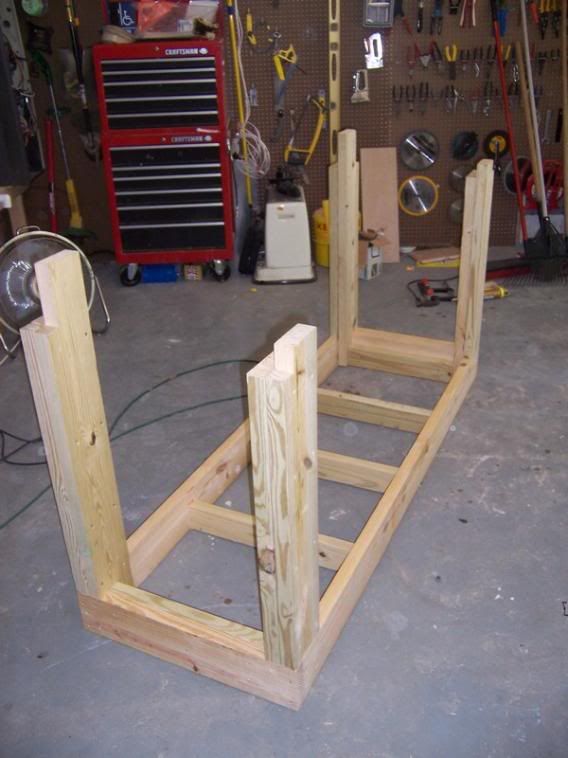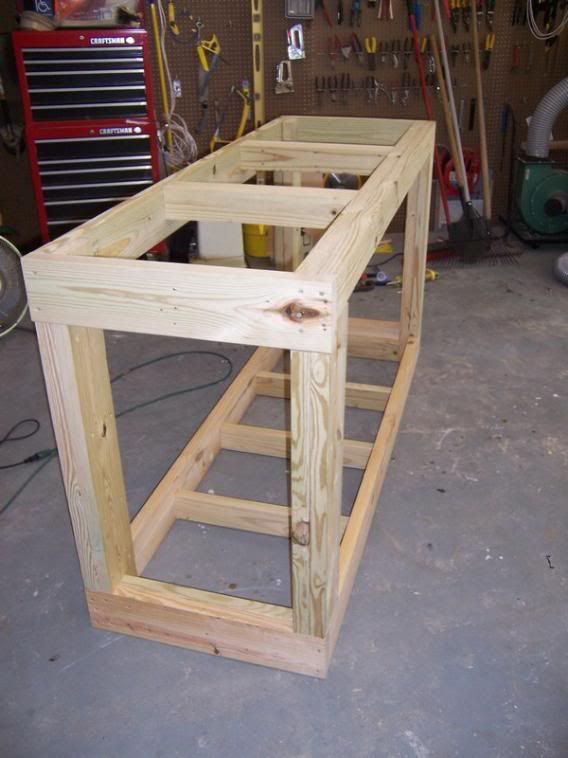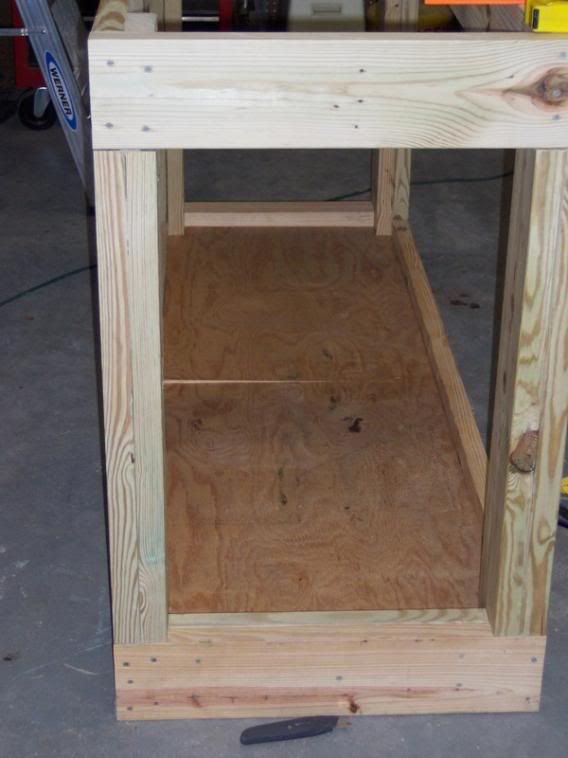scsinet
Active Member
Okay FINALLY I have time to sit down and do a thread on this. I know lots of you have asked when I'm gonna put a thread up about the system I'm planning that I keep mentioning.
First, to be clear up front... this project has been going on since May. I didn't want to bore people with my slow progress, so I figured I'd start posting steps around October... but that didn't happen.
A background story...
I've been keeping saltwater tanks for a while, and freshwater tanks even longer. I've been dabbling in different tank types (Reef, FOWLR Community, FOWLR aggressive, etc). What I found is that what really thills me are reef tanks, and most notably, setting them up. My fiance gave me permission to spend a pile of thousands on a tank provided it kept me thoroughly busy for at least a year, and that the number of tanks in the house either dropped, or stayed the same.
So I decided to consolidate my 55g reef and 90g FOWLR into the reef tank. All of my inhabitants of both tanks, minus a Volitan Lion and Valentini Puffer are reef safe, so that worked out.
So here we go...
The tank...
My LFS seriously discounted the AGA 180 w/Megaflows for me.
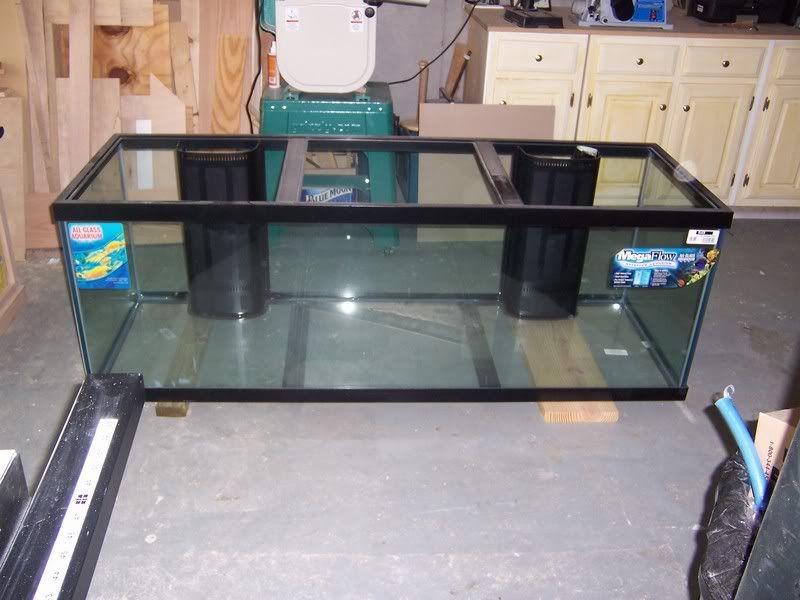
The stand...
I started by ripping 2x6's on the table saw to create one dead flat edge, then assembled those pieces into a perimeter frame to sit on the bottom of the tank. It's shown here resting on the top (upside down)...
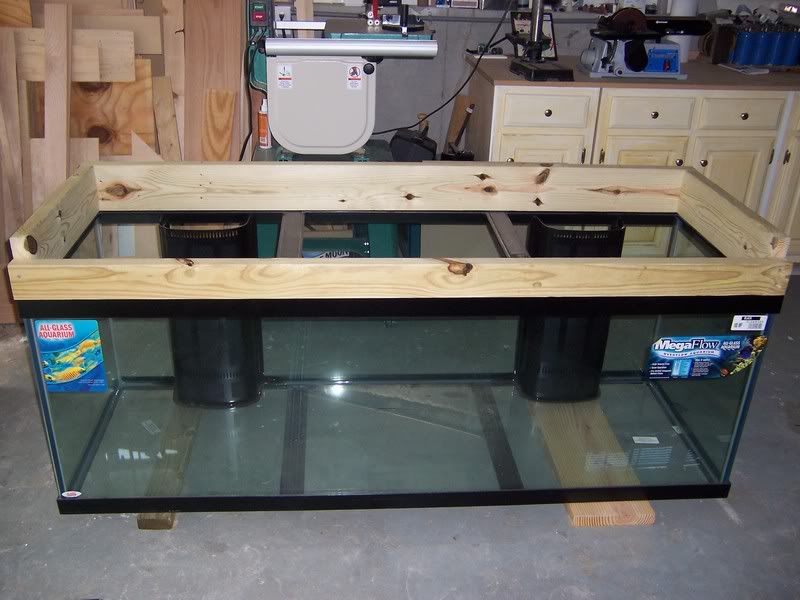
I kept the pieces clamped to my table saw (a very flat surface) as I sc-rewed and glued everything together. All pieces are assembled using waterproof wood glue and coated deck sc-rews.
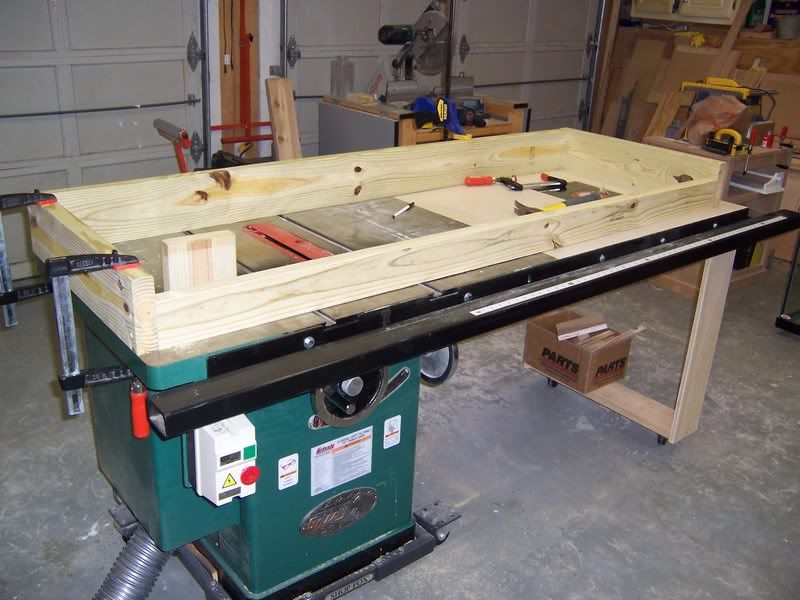
Doubled up 2x4s for the center supports...
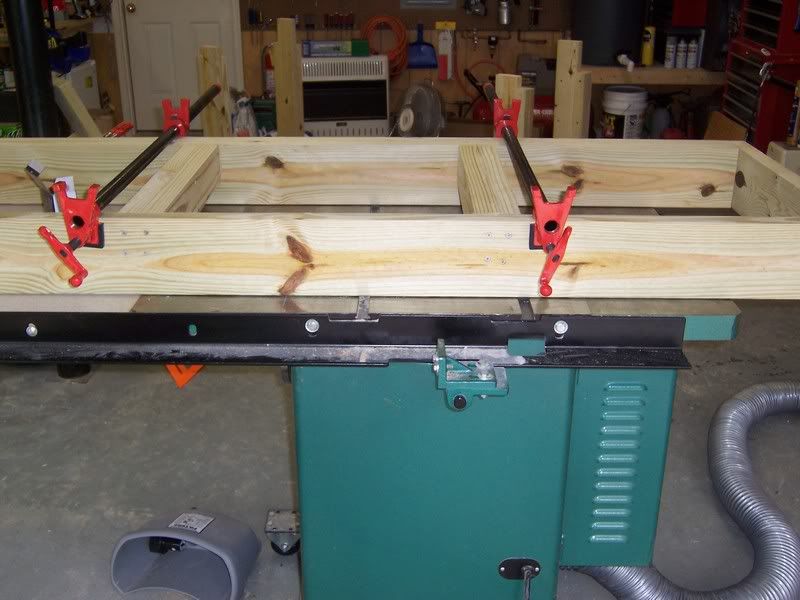
The legs are designed to rest on the bottom frame, and for the top frame to rest on them. By design, the tank's weight should never rest on the fasteners. Glue, construction adhesive, and sc-rews are all just to keep everything together, never to take weight. It's a bit easier to see the flattened top of the frame here also.
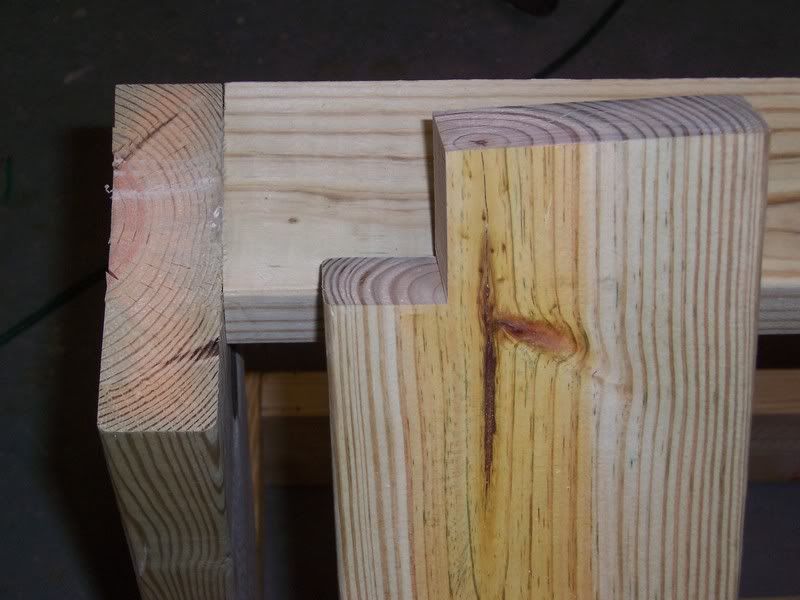

First, to be clear up front... this project has been going on since May. I didn't want to bore people with my slow progress, so I figured I'd start posting steps around October... but that didn't happen.
A background story...
I've been keeping saltwater tanks for a while, and freshwater tanks even longer. I've been dabbling in different tank types (Reef, FOWLR Community, FOWLR aggressive, etc). What I found is that what really thills me are reef tanks, and most notably, setting them up. My fiance gave me permission to spend a pile of thousands on a tank provided it kept me thoroughly busy for at least a year, and that the number of tanks in the house either dropped, or stayed the same.
So I decided to consolidate my 55g reef and 90g FOWLR into the reef tank. All of my inhabitants of both tanks, minus a Volitan Lion and Valentini Puffer are reef safe, so that worked out.
So here we go...
The tank...
My LFS seriously discounted the AGA 180 w/Megaflows for me.

The stand...
I started by ripping 2x6's on the table saw to create one dead flat edge, then assembled those pieces into a perimeter frame to sit on the bottom of the tank. It's shown here resting on the top (upside down)...

I kept the pieces clamped to my table saw (a very flat surface) as I sc-rewed and glued everything together. All pieces are assembled using waterproof wood glue and coated deck sc-rews.

Doubled up 2x4s for the center supports...

The legs are designed to rest on the bottom frame, and for the top frame to rest on them. By design, the tank's weight should never rest on the fasteners. Glue, construction adhesive, and sc-rews are all just to keep everything together, never to take weight. It's a bit easier to see the flattened top of the frame here also.




